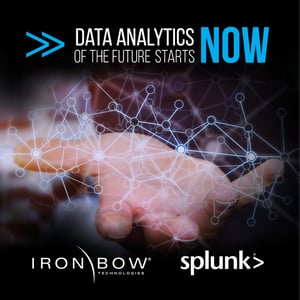Data analytics continues to surprise people with its emergent capabilities ranging from predicting how a disease, such as Ebola, will spread, to identifying the most beneficial way to market a product. In the private and public sector, big data benefits continue to expand as its applications are further developed and implemented.
The uses of data analytics stretch far beyond what we are capable of imagining, and the opportunities to advance the technology are endless. With more trust and information comes greater capabilities – especially significant as we enter the age of mobility and connected devices. IHS forecasts that the Internet of Things (IoT) market will expand from 15.4 billion devices in 2015 to 75.4 billion in 2025, creating great possibilities but also raising security concerns.
One application is analytics-driven security solutions. These solutions permit organizations to face modern cyberattacks head on with speed and precision by quickly identifying the source, investigating and responding to threats.
What if, for example, government agencies were able to prevent crime based on monitoring and gaining insights on the actions and movements of people? This scenario, once dreamed about in movies like Minority Report, is now the reality of the future of data analytics, and it doesn’t stop there.
A recent Research & Markets report predicts that the big data and data analytics industry will reach $11 billion in revenue by 2022, with increased use from the Department of Homeland Security, public safety organizations and intelligence agencies.
However, there is still work to be done. In fact, a MeriTalk survey found organizations only analyze roughly 12 percent of their data, and 78 percent of respondents said at least some of their security data is not analyzed at all due to limited skill and time. This is a huge missed opportunity as security analytics provide a thorough analysis of information on users, attacks, context, time and location from identity, endpoints, servers, apps, web and email servers and non-traditional systems.
If leveraged correctly, the utilization of data and security analytics can assist the government in ways that ultimately improve IT efficiency and reduce costs. Industry, including companies like Splunk, is striving to make machine data accessible, usable and valuable to everyone.
Imagine you work within a federal agency’s IT department. Your phone rings; a call from an employee, notifying you that their email is down. In order to fix this seemingly simple glitch, you must follow protocol to figure out what the issue is and where it resides, and then proceed to address the issue piece by IT piece. It is a tedious process that consumes much of federal IT professionals’ time, delaying other tasks and hindering both federal employee and citizen user missions.
Each day, federal IT departments reactively address system issues, once notified by a disgruntled user. Through data analytics, agencies can disrupt this often-frustrating pattern.
Data analytics can enhance security as well as simplify and streamline IT system monitoring. Not only will data analytics provide IT experts with a single dashboard to monitor the many complicated systems under their purview, but it will also notify these managers of an issue before it affects the end user. This allows the IT professional to quickly pinpoint the incoming glitch to an email server, for example, and address a storage problem before it hits.
Due to this automated monitoring catchall, IT managers save time, agencies save overall IT resources and users, whether they be within or outside of an agency, are left blissfully unaware of any issue whatsoever. More efficient IT processes save agencies time and money. They can then reallocate that energy and funding to improve efficiency through investment in IT modernization, transforming government’s mission.
Enhanced security and efficiency is just the tip of the innovation iceberg that can be tapped into when using data to your advantage. Data analytics has been around for a while, but until agencies begin to fully embrace the disruptive technology, they won’t be able to reap the growing benefits it provides.
Learn how to better harness your growing data through analytics to improve security and efficiency, and open doors for innovation and opportunity in your agency: https://www.splunk.com/en_us/solutions/solution-areas/big-data.html

COMMENTS